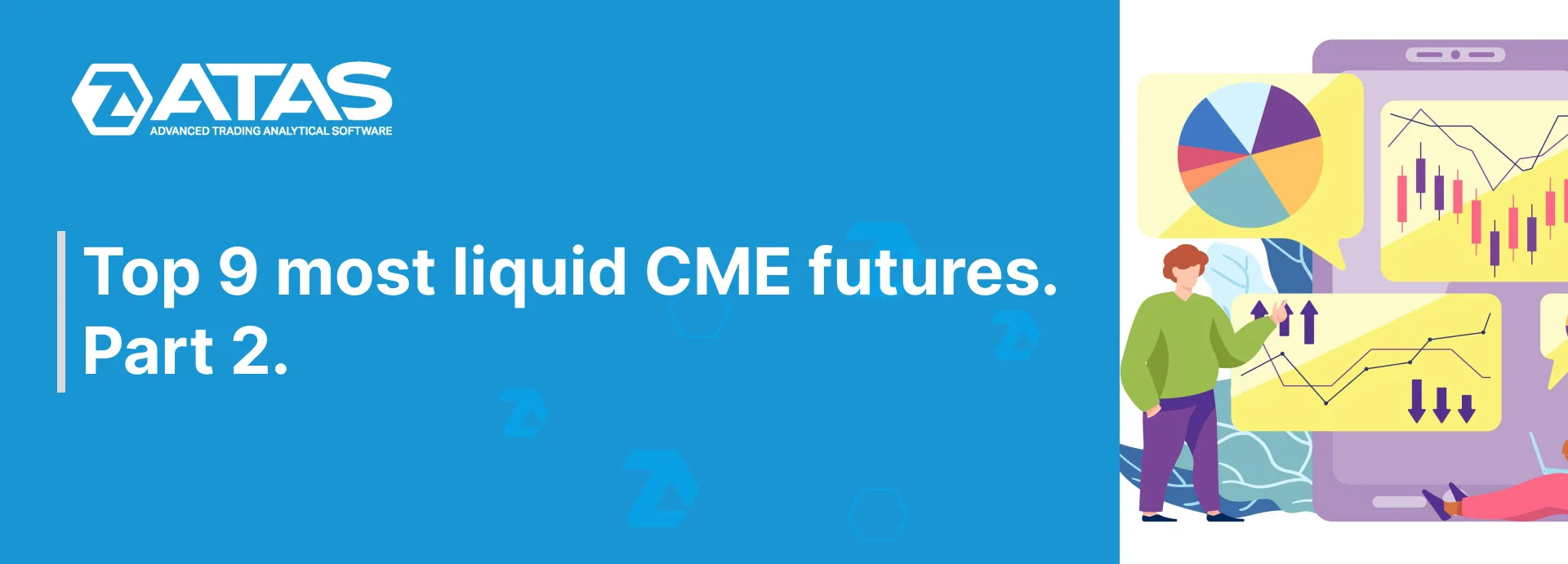CME’s most liquid futures. Part 2
Dear traders! We continue describing 9 most liquid CME futures. We hope that you enjoyed our previous review. This one will also be interesting. Read the first part of this article in TOP 9 most liquid CME futures. Part 1.
Read in this article:
- 30-Year Treasury Notes (ZB).
- Gold (GC).
- Euro FX futures (6E).
- JPY futures (6J).
6. 30-Year Treasury Notes (ZB)
The 30-Year T-Note futures are a part of the financial interest rate futures market, where the contract owner agrees to buy or sell a note on a certain date at a preliminarily specified price. The note contracts are standardized and controlled by a regulatory body, which provides for equality and succession. 30-Year T-Notes serve as an important reference standard for assessing other long-term securities.
The 30-Year Treasury Note futures contracts reflect the interest rates for the period of 30 years. They started to be traded for the first time in 1977 and are among the most popular futures amidst exchange speculators, hedge funds and other market participants. This contract has the quarterly period of circulation with expiration in March, June, September and December. The value of one contract is USD 100,000.
7. Gold (GC)
The gold futures contracts (GC) take the seventh place by liquidity and second among the commodity futures being second only to crude oil. The average daily trading volume of this contract exceeds 250,000 contracts. And although this contract is rather expensive, nevertheless it attracts a big number of traders, who trade on the COMEX, which is a part of the CME Group.
Being developed, first of all, for hedging risks, the gold futures contracts reflect the value of the underlying asset – gold in the spot market. Prices of these futures are reassessed every day by the market price. Unlike the ETF or spot market, trading in which requires a significant capital or causes risks connected with over-the-counter trades, the gold futures contract market ensures a certain level of transparency and reliability.
The main part of the traders, who trade the gold futures contracts, consists of short-term speculators, who, by and large, are not interested in delivery of the physical metal. There are different variations of the gold futures contracts, including micro or mini contracts, but, no doubt, the standard gold futures contract is the leader among all these different types. The size of the intraday guarantee collateral for this contract is rather big, but intraday traders are in comfort with it. High liquidity in a combination with the value of the price step in USD 10 makes this type of a futures contract an attractive instrument for performing short-term speculative operations and making a good profit.
8. Euro FX futures (6E)
The Euro FX futures (6E) belongs to the category of currency futures offered by the CME Group exchanges. This trading instrument takes the eighth place in the general list of the most liquid ones and the first place among the currency futures.
The Euro FX futures contracts, offered by the CME Group, provide traders with an opportunity to perform trading operations with a currency, which is common for 27 countries. The EUR/USD pair contract is noted for its high liquidity. Its face value is EUR 125,000. Moreover, there are other variants of the Euro FX futures contracts, including E-mini and E-macro. However, the standard EUR/USD futures contract is the most popular one among these three mentioned types. A big guarantee collateral is not required for trading this type of contract both during a day and for opening longer positions.
The period of circulation of the EUR/USD currency pair futures contract is the quarterly one and trading is carried out practically round the clock. This futures contract reflects the value of the European currency with respect to USD in the spot market with a daily correction of the futures contract price with consideration of the price, which is formed in the currency spot market.
You can read a more detailed review on the EUR futures in our article: EUR futures: 7 things you should know.
9. JPY futures (6J)
The JPY futures is the second most popular one among currency futures and it takes 9th place in the general list. This contract provides traders with a possibility to perform operations with the currency of the third largest world economy. Being expressed in the form of relation of JPY to USD (JPY/USD), this futures contract represents a price inversion on the USD/JPY currency pair in the spot market. The base face value of one contract is JPY 12,500,00 and the price step is USD 6.25 with a minimum step size of 0.0000005. JPY possesses unique characteristics as the ‘safe haven’ currency, which makes its futures contract the most sought-after for hedging risks. This contract trading attracts not only currency speculators but also traders with positions in the stock market. JPY has a tendency to become more expensive during the times when investors do not want to take more risks or when uncertainty is growing in the markets, and vice versa, it has a tendency to become cheaper during the periods of less negative attitude to risks.
Dear friends, thank you for your interest! Check our blog for new articles. There are many interesting things ahead!



